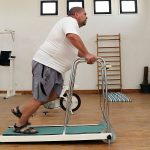
Insomnia affects up to 15 percent of Americans, but sleeping pills aren’t the only — or the best — answer. A good sleep routine, exercise and mindfulness are all options to get the restorative sleep you need. Set up a daily sleep pattern by going to bed at the same time each night and waking up at the same time each morning. Yes, even on the weekends. Keep your bedroom peaceful, dark and on the cool side. Take out all electronics, and stop using them at least one hour before you turn in. They emit a type of light that interferes with your natural body rhythms, prompting you to stay alert when you should be winding down. Exercising vigorously in the morning leads to better sleep at night. But if your only free time is later in the day, such workouts don’t seem to interfere with sleep as previously thought. Stubborn sleeplessness may respond to mindfulness meditation, which can focus specifically on insomnia or stress reduction. Mindfulness techniques can target the thought patterns that perpetuate insomnia. According to research, working with a therapist and practicing meditation at home for 30 to 45 minutes nearly every day helps people get better sleep. And there are also self-help books available if you want to try it on your own. When these techniques aren’t enough to overcome insomnia… read on >


















